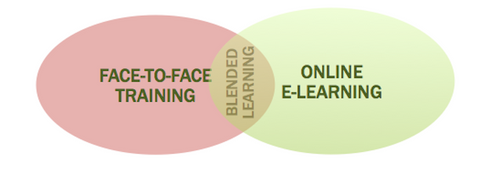
There's a lot of times when face-to-face training is the only thing that will do. Especially in the home performance industry: hands-on is the only way you can really learn to identify and diagnose energy-sucking and moisture-growing situations in a house. But to understand what you need to identify and diagnose, you need to have a good grasp of background concepts and physics, and how they impact the performance of the house.
Everything that happens in a house is caused by things you can't see and you can't hold: heat flow, air flow, moisture flow, neutral pressure plane. It can be a challenge to teach these concepts, especially to folks who are hands-on learners. Which, not surprisingly, is a high percentage of people who work with their hands.
Blended learning has been a staple of this industry's training: classroom time is mixed with field time in almost all programs. But classroom time is very expensive, to both the provider and the participant. And participants come to a course with a wide range of experience and existing understanding, not to mention differences in learning styles. Adding an online component to that blended learning package can help reduce stress in several ways.
Check out our white paper on blended learning here.



